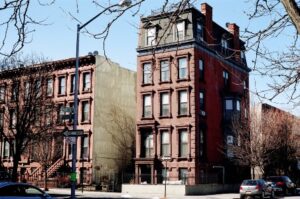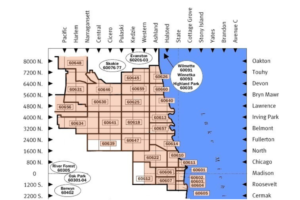Chicago's best property management company, providing tenant screening, rent collection, property marketing, and more at reasonable cost.
Chicago Property Management at its best!
Three Pentacles is a trusted property management company in Chicago, IL. Managing residential properties, commercial properties, HOA associations, and short-term vacation properties, Three Pentacles works hard to provide you with the customized property management service that works for you.
We Manage All Types of Properties in Chicago
Our City of Chicago Service Area
About Chicago
Indigenous Chicago
Chicago is the traditional homelands of Hoocąk (Winnebago/Ho’Chunk), Jiwere (Otoe), Nutachi (Missouria), and Baxoje (Iowas); Kiash Matchitiwuk (Menominee); Meshkwahkîha (Meskwaki); Asâkîwaki (Sauk); Myaamiaki (Miami), Waayaahtanwaki (Wea), and Peeyankihšiaki (Piankashaw); Kiikaapoi (Kickapoo); Inoka (Illini Confederacy); Anishinaabeg (Ojibwe), Odawak (Odawa), and Bodéwadmik (Potawatomi). Seated atop a continental divide, the Chicago region is located at the intersection of several great waterways, leading the area to become the site of travel and healing for many Tribes.
The City understands that Tribes are sovereign Nations and should have the first voice in acknowledging their historical and contemporary presence on this land. If your Tribe would like to see changes, please reach out to us for comments.
Early Chicago
Chicago’s first permanent non-indigenous resident was a trader named Jean Baptiste Point du Sable, a free black man from Haiti whose father was a French sailor and whose mother as an African slave, he came here in the 1770s via the Mississippi River from New Orleans with his Native American wife, and their home stood at the mouth of the Chicago River. In 1803, the U.S. government-built Fort Dearborn at what is now the corner of Michigan Avenue and Wacker Drive (look for the bronze markers in the pavement). It was destroyed in 1812 following the Battle of Fort Dearborn, rebuilt in 1816, and permanently demolished in 1857.
A Trading Center
Incorporated as a city in 1837, Chicago was ideally situated to take advantage of the trading possibilities created by the nation’s westward expansion. The completion of the Illinois & Michigan Canal in 1848 created a water link between the Great Lakes and the Mississippi River, but the canal was soon rendered obsolete by railroads. Today, 50 percent of U.S. rail freight continues to pass through Chicago, even as the city has become the nation’s busiest aviation center, thanks to O’Hare and Midway International airports.
The Great Fire of 1871
As Chicago grew, its residents took heroic measures to keep pace. In the 1850s, they raised many of the streets five to eight feet to install a sewer system – and then raised the buildings, as well. Unfortunately, the buildings, streets and sidewalks were made of wood, and most of them burned to the ground in the Great Chicago Fire of 1871. The Chicago Fire Department training academy at 558 W. DeKoven St. is on the site of the O’Leary property where the fire began. The Chicago Water Tower and Pumping Station at Michigan and Chicago avenues are among the few buildings to have survived the fire.
“The White City”
Chicago rebuilt quickly. Much of the debris was dumped into Lake Michigan as landfill, forming the underpinnings for what is now Grant Park, Millennium Park and the Art Institute of Chicago. Only 22 years later, Chicago celebrated its comeback by holding the World’s Columbian Exposition of 1893, with its memorable “White City.” One of the Exposition buildings was rebuilt to become the Museum of Science and Industry. Chicago refused to be discouraged even by the Great Depression. In 1933 and 1934, the city held an equally successful Century of Progress Exposition on Northerly Island.
We understand the ins and outs of local real estate
Need Help? Inquire About Our Management Services Here
Are you maximizing your rental property’s potential?





